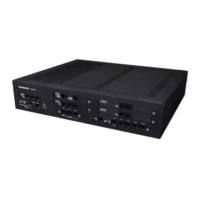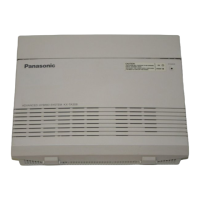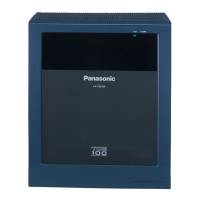3.9.5 ESVM4 Card (KX-TDA0194)
PC Programming Manual References
2.5.4 Tool—Simplified Voice Message—Delete All Recording
2.5.5 Tool—Simplified Voice Message—Check Current Usage
3.5 [1-1] Slot—OPB3 Card Property— SVM Feature
3.44 [1-1] Slot—OPB3 Card Property— SVM Feature
4.5 [2-3] Timers & Counters—Miscellaneous
→ SVM—Recording Time
→ SVM—Dial Tone Continuous Time
4.9 [2-6-1] Numbering Plan—Main—Features— Simplified Voice Message Access
5.1 [3-1-1] Trunk Group—TRG Settings—Tone Detection
→ Simplified Voice Message Tone Detection—Silence
→ Simplified Voice Message Tone Detection—Continuous
→ Simplified Voice Message Tone Detection—Cyclic
6.1 [4-1-1] Wired Extension—Extension Settings—Option 6— Display Lock / SVM Lock
6.9 [4-1-7] Wired Extension—Simplified Voice Message
6.10 [4-2-1] Portable Station—Extension Settings—Option 6— SVM Lock
6.16 [4-2-5] Portable Station—Simplified Voice Message
7.5 [5-3-3] Voice Message—SVM
Feature Manual References
4.1.4 Dial Tone
12.1.2 OGM (Outgoing Message)
20.1.1 Walking COS
21.1 Capacity of System Resources
Operating Manual References
1.3.64 SVM (Simplified Voice Message)
3.1.2 Personal Programming
16.1.10 Syslog Record Management
Description
By connecting this PBX to a Syslog server over a LAN, it is possible to output local alarm information (major
alarms/minor alarms) to a external PC.
Conditions
• To be able to use this feature, through system programming, it is required to enable this feature, register
the IP address of the Syslog server, and to select whether major/minor are sent.
PC Programming Manual References
13.1 [11-1] Main—Syslog
330 Feature Manual Document Version 2013-05
16.1.10 Syslog Record Management

